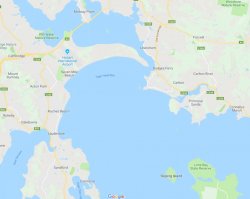juddles
Suspended
- Joined
- Aug 2, 2011
- Posts
- 5,283
- Qantas
- Platinum 1
I have learnt through this thread the relative unimportance of reverse thrust in braking - essentially I understand that more than braking in itself, it destroys lift and aids the wheel brakes.
What my question is, is there some sort of numerical valuation of wheel braking? IE can you apply "20%" or "70%" braking via the wheels? Or is it all "feel"?
My most memorable flying event was an aborted takeoff, a Lufthansa 747 from FRA, where the pilot decided just before rotation to STOP. It was incredible to me the braking power that was applied - the cabin was literally alive with any loose object bouncing forward through the cabin. (I felt this acutely being in the nose). On that occasion I think the wheels caught fire - it was hard to see from inside, but a stack of firefighting machines surrounded us and moved in, and we sat on the runway for four hours before we got towed off to one side. I believe they were changing tyres. My amateur assessment is that the pilot "hit" the brakes completely.
I also get the concept of heating of brakes. But as i say, is there an organised protocol re wheel brakes?
What my question is, is there some sort of numerical valuation of wheel braking? IE can you apply "20%" or "70%" braking via the wheels? Or is it all "feel"?
My most memorable flying event was an aborted takeoff, a Lufthansa 747 from FRA, where the pilot decided just before rotation to STOP. It was incredible to me the braking power that was applied - the cabin was literally alive with any loose object bouncing forward through the cabin. (I felt this acutely being in the nose). On that occasion I think the wheels caught fire - it was hard to see from inside, but a stack of firefighting machines surrounded us and moved in, and we sat on the runway for four hours before we got towed off to one side. I believe they were changing tyres. My amateur assessment is that the pilot "hit" the brakes completely.
I also get the concept of heating of brakes. But as i say, is there an organised protocol re wheel brakes?
















